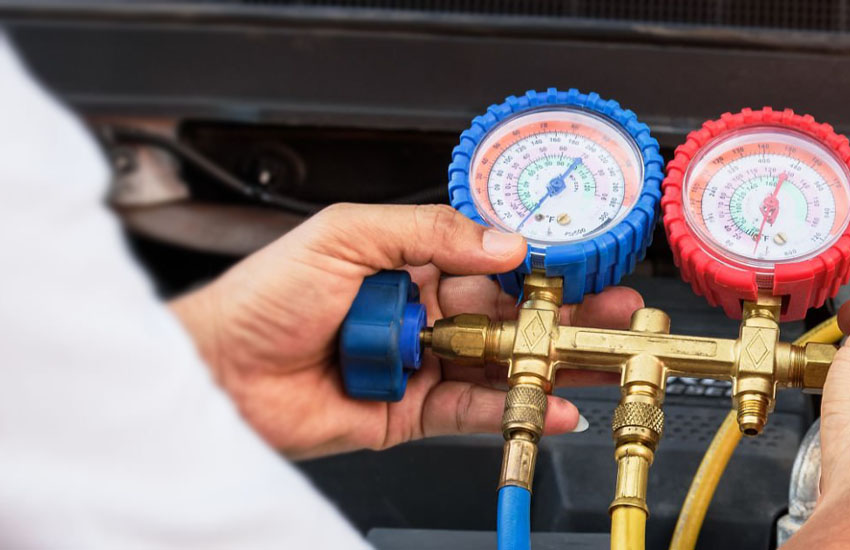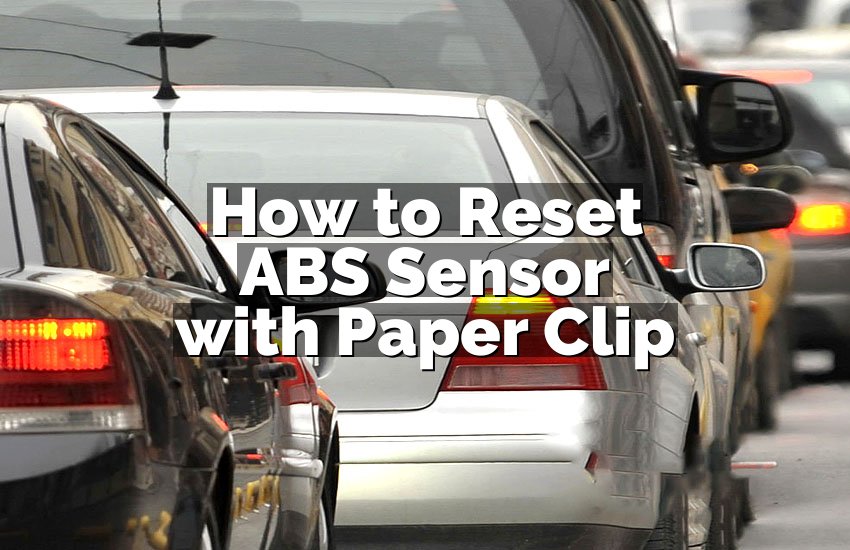You’ve turned on your car’s AC, but it’s still warm inside. This could mean your AC compressor isn’t working. The compressor is crucial for cooling, as it pumps refrigerant through the system. If it fails, your AC won’t blow cold air.
If your AC isn’t cooling, start by checking refrigerant levels, low levels can stop the compressor. Also, inspect fuses and relays; blown ones can prevent the compressor from working. It might be a faulty compressor clutch or electrical issue. If you’re unsure, have a mechanic take a look.
In this blog post, we’ll talk about why this might happen and what you can do to fix it. We’ll go over some common problems and easy steps to help you get your AC back in action. Let’s get started and cool down that ride!
Common Causes of Car AC Compressor is Not Turning On
If your car’s AC compressor isn’t turning on, there are several common causes to check:
Low Refrigerant
If your car’s AC compressor isn’t turning on, it might be because the refrigerant level is too low. Refrigerant is a special fluid that cools the air in your car’s AC system. If there’s not enough refrigerant, the system can’t work properly. You might need to get your AC system checked for leaks and then have it recharged with refrigerant. This is usually done by a mechanic who will use special tools to measure and fill the refrigerant.
Blown Fuse
Another common reason for the AC compressor not working is a blown fuse. The fuse is a small part in your car’s fuse box that protects the AC system by stopping too much electrical current from flowing. If the fuse blows, it means no power is going to the compressor. To fix this, you can check the fuse box, which is usually located under the dashboard or in the engine bay. Look for a fuse labeled for the AC system and replace it with a new one of the same type.
Faulty Compressor Relay
The compressor relay is an electrical switch that controls the power to the AC compressor. If the relay is faulty, it won’t send power to the compressor, and the compressor won’t turn on. You can find the relay in the fuse box or a separate relay box. Replacing the relay is usually simple and involves pulling out the old relay and putting in a new one. If you’re not sure where it is or how to replace it, you can ask a mechanic for help.
Defective AC Clutch
The AC compressor has a part called the clutch that helps the compressor turn on and off. If the clutch is broken or not working, the compressor might not start. The clutch is a small part that sits on the front of the compressor and engages when the AC is turned on. If it’s defective, it might need to be repaired or replaced. A mechanic can help diagnose if the clutch is the problem and fix or replace it as needed.
Wiring Issues
Wiring issues can also stop your AC compressor from turning on. The wires that connect the compressor to the car’s electrical system can become damaged or loose over time. If the wires aren’t connected properly, the compressor won’t receive power. To fix this, you might need to check the wiring connections and make sure they are secure and undamaged. If you find any broken or frayed wires, they will need to be repaired or replaced.
Faulty Pressure Switch
The AC system has pressure switches that help monitor the refrigerant levels and ensure they are just right. If one of these switches is faulty, it might not send the right signals to the compressor, preventing it from turning on. If you think a pressure switch might be the problem, a mechanic can test the switches and replace any that aren’t working correctly.
Broken AC Compressor
Sometimes, the issue is with the compressor itself. If the compressor is broken, it might not turn on at all. This is usually the last thing to check if all other parts seem fine. A broken compressor might need to be repaired or replaced. This is a bigger job and usually requires a professional mechanic to diagnose and fix the problem.
If you are unsure about any of these steps or if you’re not comfortable checking these parts yourself, it’s a good idea to take your car to a mechanic. They can diagnose the issue and help you get your AC system working again.
If you’re having trouble, it’s often a good idea to consult a professional mechanic to diagnose and fix the problem.
How to Fix Car AC Compressor is Not Turning On

1. Check the Refrigerant Level
The refrigerant is the lifeblood of your car’s AC system. It’s the fluid that absorbs heat from the air inside your car, making it cool and comfortable. If your AC compressor isn’t turning on, one of the most common reasons could be that the refrigerant level is too low. When the refrigerant is low, the system can’t create enough pressure to activate the compressor, which is why it stays off.
To check the refrigerant level, you might need to buy a refrigerant gauge or a recharge kit from an auto parts store. These kits usually come with instructions on how to check and refill the refrigerant. Here’s a basic rundown of the process:
Locate the AC Service Ports: Your car has two service ports—one for the low-pressure side and one for the high-pressure side. You’ll usually find these ports under the hood. The low-pressure port is the one you’ll use to check the refrigerant level.
Attach the Gauge: Connect the gauge to the low-pressure port. Make sure it’s securely attached. The gauge will show the pressure in the system, which corresponds to the amount of refrigerant.
Check the Pressure: With the car running and the AC turned on, read the gauge. If the pressure is low, it means the refrigerant is low.
Recharge if Necessary: If the refrigerant is low, you can recharge the system using the kit. Attach the can of refrigerant to the gauge and slowly add it to the system. Be careful not to overfill, as too much refrigerant can also cause problems.
Look for Leaks: If your refrigerant is low, it could be due to a leak. After recharging, you should monitor the system to see if it loses refrigerant quickly again. If it does, there’s likely a leak that needs to be repaired by a professional.
2. Inspect the Fuse
Fuses are small, but they play a crucial role in your car’s electrical system. The fuse for your AC system protects the compressor by stopping the flow of electricity if something goes wrong, like a short circuit. If the fuse is blown, the compressor won’t get any power, and it won’t turn on.
To inspect the fuse:
Locate the Fuse Box: Your car’s fuse box is usually found under the dashboard on the driver’s side or under the hood in the engine bay. Your car’s manual can help you find the exact location.
Identify the AC Fuse: Look at the diagram on the fuse box cover or in your manual to identify the fuse that controls the AC system. It’s often labeled as “AC” or “Compressor”
Remove and Inspect the Fuse: Use a fuse puller or a pair of needle-nose pliers to gently pull the fuse out of the slot. Hold it up to the light and check if the thin metal strip inside is intact. If the strip is broken, the fuse is blown.
Replace the Fuse: If the fuse is blown, replace it with a new one of the same amperage rating. You can find the rating on the fuse itself or in your car’s manual. Push the new fuse into the slot until it’s secure.
Test the AC: After replacing the fuse, start your car and turn on the AC. If the compressor turns on, the problem was the fuse. If not, move on to the next step.
3. Test the Compressor Relay
The compressor relay is a small but important part of your car’s AC system. It acts like an electrical switch, turning the compressor on and off when needed. If the relay is faulty, the compressor won’t get the signal to turn on, even if everything else is working properly.
To test and replace the compressor relay:
Find the Relay: The compressor relay is usually located in the fuse box or in a separate relay box under the hood. Your car’s manual will help you locate it.
Test the Relay: An easy way to test the relay is to swap it with another relay of the same type in your car. For example, you might swap it with the horn relay, if they are the same. If the horn works with the AC relay, but the AC doesn’t work with the horn relay, then the relay is faulty.
Replace the Relay: If you find that the relay is bad, you’ll need to replace it. Relays are usually inexpensive and easy to replace. Simply pull out the old relay and push the new one into place.
Check the AC: After replacing the relay, turn on your car and test the AC. If the compressor still doesn’t turn on, continue troubleshooting.
4. Examine the AC Clutch
The AC clutch is a mechanical part that engages the compressor when the AC system is turned on. It allows the compressor to start compressing refrigerant, which cools the air in your car. If the clutch isn’t working, the compressor won’t turn on.
Here’s how to check the AC clutch:
Start the Car and Turn On the AC: With the engine running, turn on the AC and set it to the coldest setting.
Watch the Compressor: Look at the compressor pulley under the hood. The pulley has two parts: the outer part (which always spins) and the inner part (the clutch). When the AC is turned on, the clutch should engage and start spinning with the pulley.
Listen for Clicking: You should hear a clicking sound when the clutch engages. If you don’t hear it, the clutch might be stuck or broken.
Tap the Clutch: Sometimes, the clutch can get stuck. You can try gently tapping it with a tool, like a wrench or screwdriver, to see if it will engage. Be careful when doing this, as the engine and compressor parts can be hot.
Replace the Clutch: If tapping doesn’t work, the clutch might be defective. Replacing the clutch can be a complex job and might require special tools. It’s often best to have a mechanic do this repair.
5. Check the Wiring
Wiring problems are another common cause of an AC compressor not turning on. Over time, wires can become loose, corroded, or damaged, preventing the compressor from getting the power it needs.
To check the wiring:
Inspect the Wires: Look at the wires leading to the AC compressor. Check for any signs of damage, such as cracks, frayed insulation, or corrosion. Pay special attention to the connectors, as they can become loose or corroded.
Tighten Loose Connections: If you find any loose connections, try tightening them. Make sure the connectors are secure and making good contact.
Repair or Replace Damaged Wires: If you find any damaged wires, they will need to be repaired or replaced. You might need to cut out the damaged section and splice in a new piece of wire, or replace the entire wire if the damage is extensive. Be sure to use electrical tape or heat-shrink tubing to protect the splices.
Test the System: After checking and repairing the wiring, turn on the car and test the AC. If the compressor still doesn’t turn on, there may be a problem with the pressure switch or the compressor itself.
6. Test the Pressure Switch
The pressure switch is a safety device that monitors the refrigerant levels in your AC system. If the pressure is too high or too low, the switch will prevent the compressor from turning on to avoid damage.
To test the pressure switch:
Locate the Pressure Switch: The pressure switch is usually located on the refrigerant lines, either on the high-pressure side or the low-pressure side. Your car’s manual can help you find it.
Disconnect the Switch: Turn off the car and carefully disconnect the wiring connector from the pressure switch.
Test with a Multimeter: Use a multimeter set to continuity mode to test the switch. Place the probes on the terminals of the switch. If the switch is working correctly, you should get a reading on the multimeter. If there’s no reading, the switch might be faulty.
Replace the Switch: If the pressure switch is faulty, it will need to be replaced. This can be a bit tricky because you might lose some refrigerant during the replacement. If you’re not comfortable doing this, a mechanic can handle it for you.
Recharge the System: After replacing the switch, the system might need to be recharged with refrigerant. Again, this is something a mechanic can do to ensure the system is properly sealed and filled.
7. Inspect the Compressor Itself
If you’ve checked everything else and the compressor still isn’t turning on, the problem might be with the compressor itself. A broken or worn-out compressor will need to be repaired or replaced.
Here’s what you can do:
Visual Inspection: Look at the compressor for any visible signs of damage, such as cracks, leaks, or broken parts. If the compressor is leaking refrigerant or has obvious damage, it will need to be replaced.
Listen for Strange Noises: When the AC is on, listen for any strange noises coming from the compressor. Grinding, squealing, or rattling sounds could indicate that the compressor is failing.
Check for Proper Operation: If the compressor engages but doesn’t seem to be working properly (e.g., the air isn’t getting cold), it might be partially damaged or worn out.
Replace the Compressor: Replacing a compressor is a major repair that usually requires special tools and knowledge. It’s best to have a professional mechanic handle this job. They will remove the old compressor, install a new one, and recharge the system with refrigerant.
Test the AC System: After replacing the compressor, the entire AC system should be tested to ensure everything is working properly.
8. Seek Professional Help if Needed
If you’ve gone through all these steps and the compressor still isn’t turning on, it might be time to seek help from a professional. AC systems are complex, and sometimes the problem can be something that’s difficult to diagnose without the right tools and expertise.
A mechanic can run more advanced tests, like checking for electrical issues in the control module or using a diagnostic tool to read error codes from your car’s computer. They can also properly handle refrigerant, which requires special equipment and knowledge to work with safely.
I hope this guide helped you understand why your car’s AC compressor isn’t turning on. By checking the fuse, relay, and connections, you can often fix the problem. If these steps don’t work, it might be time to see a mechanic. Keeping your AC system in good shape will help keep you cool on the road.
Questions in Your Mind
Is It Safe to Drive with a Non-Functioning AC Compressor?
Driving with a non-functioning AC compressor is generally safe for the car’s operation, but it can be uncomfortable, especially in hot weather. However, if the compressor has a serious issue like a leak or a damaged clutch, it could affect other parts of the AC system over time. It’s best to address the issue sooner rather than later.
Is It Expensive to Replace an AC Compressor?
Replacing an AC compressor can be costly. The price can vary depending on your car’s make and model, but it often ranges from a few hundred to over a thousand dollars, including parts and labor. It’s a good idea to get quotes from several mechanics to find the best price.
Can I Recharge My AC System Without Fixing the Compressor?
If the AC compressor isn’t working, simply recharging the system might not fix the problem. The compressor needs to be functional to circulate the refrigerant. If it’s broken, recharging won’t help, and the issue will need to be repaired.
Can a Faulty Compressor Cause Other Problems in My Car?
Yes, a faulty compressor can lead to other problems in your car’s AC system. It can cause issues like leaks, poor cooling performance, or even damage other components like the condenser or evaporator if left unaddressed.
Do I Need to Replace the Entire AC System If the Compressor Fails?
Not necessarily. If the compressor fails, you might only need to replace the compressor itself. However, if the failure has caused damage to other parts of the AC system, those parts might also need to be replaced.
Is It Normal for the AC Compressor to Turn On and Off Frequently?
It’s normal for the AC compressor to cycle on and off to maintain the correct temperature inside the car. However, if it’s turning on and off too frequently (short cycling), it could be a sign of low refrigerant, a faulty pressure switch, or other issues that need attention.
Can I Replace the AC Compressor Myself?
Replacing an AC compressor is a complex job that typically requires specialized tools and knowledge of your car’s AC system. While it’s possible to do it yourself, it’s usually recommended to have a professional mechanic handle the replacement to ensure it’s done correctly.
Do I Need to Recharge the AC System After Replacing the Compressor?
Yes, after replacing the AC compressor, the system will need to be recharged with refrigerant. This process requires special equipment to properly evacuate the system and add the correct amount of refrigerant.
Is It Possible to Repair a Damaged AC Compressor?
In some cases, a damaged AC compressor can be repaired, especially if the issue is with a specific part like the clutch or pulley. However, depending on the extent of the damage, it might be more cost-effective to replace the compressor entirely.
Can a Blown Fuse Cause the AC Compressor Not to Turn On?
Yes, a blown fuse can prevent the AC compressor from turning on. The fuse protects the compressor from electrical issues, so if it’s blown, the compressor won’t receive power. Replacing the fuse is a simple fix if this is the cause of the problem.


